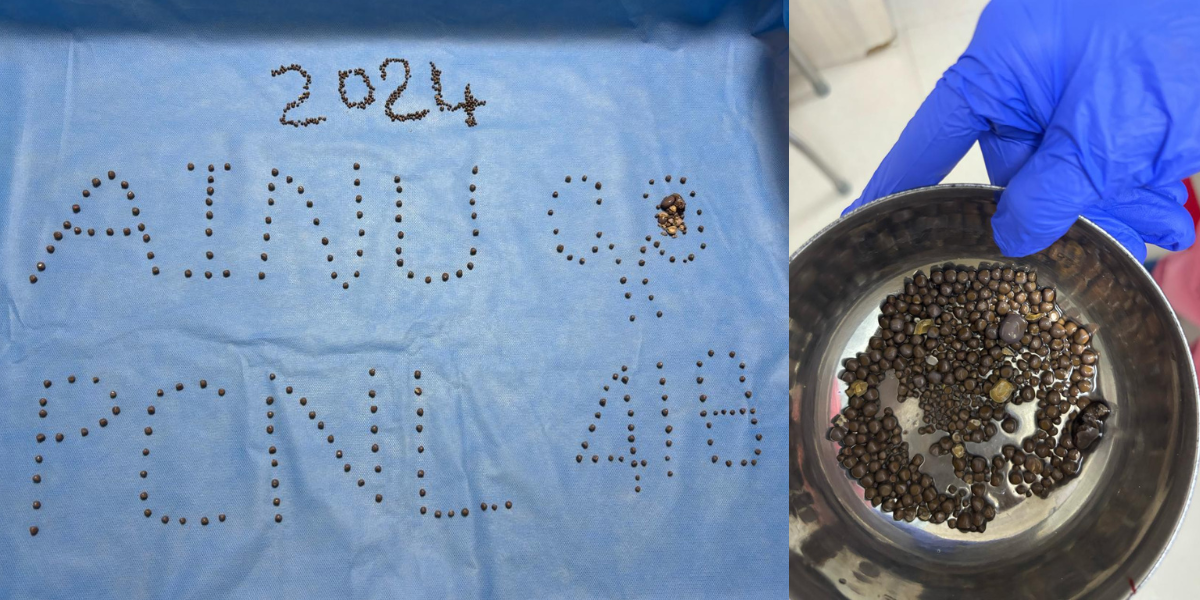PCNL entails making small incisions through which specialised instruments are inserted into the kidney to break the stones and take them out.

418 stones removed from one patient. (Supplied)
A team of urologists at the Asian Institute of Nephrology and Urology (AINU) in Hyderabad has accomplished a remarkable feat: they successfully extracted 418 kidney stones from a patient whose kidney function was at a mere 27 percent.
This achievement was made possible through a minimally invasive procedure, marking a significant advancement in surgical techniques for kidney stone removal, as stated by the hospital.
The hospital highlighted the unique challenge presented by the 60-year-old patient.
Rather than opting for a conventional and more invasive approach, the medical team from the Asian Institute of Nephrology and Urology in Hyderabad, led by Dr K Purna Chandra Reddy, Dr Gopal R Tak, and Dr M Dinesh, chose to employ percutaneous nephrolithotomy (PCNL), a minimally invasive technique.
PCNL entails making small incisions through which specialised instruments, including a miniature camera and laser probes, are inserted into the kidney.
To put it simply, imagine your kidney as a bathtub, and sometimes, little rocks (kidney stones) can form inside it. Removing these rocks without damaging the entire tub requires a delicate approach — enter percutaneous nephrolithotomy (PCNL). It’s akin to having a specialised tool that allows us to reach inside the tub through a tiny hole in the wall, avoiding unnecessary mess.
So, the doctor makes a small incision in your back, like a little door, and inserts a special tube into your kidney, resembling a small tunnel. Utilising a tiny camera and other tools, they locate and break down the kidney stones into smaller fragments. Once fragmented, the stones can be extracted through the tube.
Following the procedure, the body can heal the small incision in the back, providing relief from the troublesome kidney stones without the need for extensive intervention. Therefore, PCNL facilitates significant improvement without resorting to invasive measures.
“This allows surgeons to precisely target and remove the stones without the need for large surgical openings, minimizing trauma and expediting recovery for the patient,” said the hospital in statement.
The intricate procedure, demanding exceptional skill and precision, unfolded over two hours as the surgical team painstakingly removed each stone, deftly navigating the complex urinary tract network. Advanced imaging technology and state-of-the-art equipment played a pivotal role in managing the extensive stone burden while safeguarding the delicate balance of kidney function.
Post-procedure, doctors advised the patient to increase water intake and reduce salt consumption during the summer.
Doctors at AINU emphasised that this extraordinary achievement not only showcases the power of innovation but also serves as a beacon of hope for patients worldwide grappling with kidney stones and related conditions.
(Edited by Kamna Revanoor)

May 03, 2024

May 03, 2024

May 03, 2024

May 03, 2024

May 03, 2024

May 03, 2024